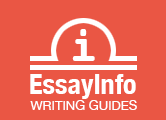At some point in your academic career, especially if you're attending a private college or university, you'll probably think about taking out a federal student loan to help meet your college costs, or your parents may consider taking one out to help contribute to your education. Government loans can be an integral part of a complete student aid package, and many students would not be able to afford college without them. In fact, some federal loans will only be given to those students who demonstrate a financial need. But interest rates on these loans are very low; they're much better than taking out a conventional loan from a bank. Federal law sets the maximum interest rates and fees that lenders may charge for federally-guaranteed loans. Nothing prevents a lender from charging lower fees. Many lenders offer a variety of student loan discounts to attract borrowers. For example, the interest rate on the Stafford Loan for new loans first disbursed after July 1, 2006 is a fixed rate of 6.8%. The current interest rates on the Stafford Loan are 6.54% during the in-school and grace periods and 7.14% during the repayment period.
There are different kinds of federal student loans, but one thing most of them have in common is that borrowers must maintain at least half time student status while using the money. If for some reason your course load falls under half of a full time load, you will have to begin repaying the money immediately.
There are two sources for student loans - the federal government and private lenders. In order to obtain most federal student loans, you will first need to file the Free Application for Federal Student Aid (FAFSA).
Loans 2 check out:
Perkins Loan. Based on financial need. Undergraduates may borrow up to $4000 per academic year, up to $20,000 total. Graduate students may borrow up to $6000 per year, with a cap of $40,000. The money is borrowed directly from the school, and repaid to the school. Repayment begins six months after graduation, and you make take up to 10 years to repay. Perkins loan recipients are not required to maintain half time status.
Federal Stafford Loan. Doesn't require financial need to qualify. This is also known as the Federal Family Education Loan, or FFEL Stafford Loan. The FFEL loans are either subsidized or unsubsidized. Subsidized loans means the federal government pays the interest while you're in college, and for six months after you graduate. For unsubsidized loans, the borrower becomes liable for the interest immediately upon taking out the loan. Interest payments can be made while you're in school, or you may choose to defer them until you graduate and begin paying off the principal. Under the FFEL Stafford Loan students who are dependents of their parents may borrow up to $23,000 over the course of their education. Students who support themselves may borrow more-up to $46,000 over the course of their undergraduate study. Stafford loans are not made by the college, but by financial institutions like banks and credit unions, and you have between 10 and 25 years to repay, depending on how much you borrow.
Direct Stafford Loans - the same rules apply as above, the only difference being that instead of borrowing the money from a bank or credit union, the money is borrowed directly from the US government.
Federal PLUS Loan. Parents of dependent students can borrow a PLUS Loan to help pay education expenses of an undergraduate student enrolled at least half time in an eligible program at an eligible school. PLUS Loans are available through the Federal Family Education Loan (FFEL) Program and the William D. Ford Federal Direct Loan (Direct Loan) Program. An acceptable credit history is a requirement to receive a PLUS loan. A parent may borrow up to the cost of attendance (established by the school) minus other financial aid including other loans. A fee of up to 4% can be charged to borrow a PLUS loan. Many lenders pay this fee on behalf of borrowers, but not all. It's important to carefully review the terms of your loan when they are presented by your lender.
TIP! Use Federal Student Loan Consolidation. A Consolidation Loan allows you to combine all the federal student loans you received to finance your college education into a single loan. Consolidation can significantly lower your monthly payment, offers the security of a fixed interest and provides the convenience of making one single payment each month. Most federal education loans are eligible for consolidation, including subsidized and unsubsidized Direct and FFEL Stafford Loans, SLS, Federal Perkins Loans, Federal Nursing Loans, and Health Education Assistance Loans. Private education loans are not eligible.
Alternative/Private Loans
If federal loans are not enough to cover your educational expenses, if you do not wish to make payments of principal and interest while in school or if you want a loan that is in the student's name, there are private student loans (sometimes called alternative student loans). Private loans are made by banks and other lenders. They must be used solely for education expenses, but offer convenience and flexibility not found in other federal loan programs. Private loans can fill the gap between what you receive from all financial aid sources and what you really need to cover the total cost of your education. Depending on the lender, advantages such as online loan application, quick credit response and online account management may be offered. However, you will need good credit and most students will need a qualified co-signer in order to obtain a private loan.
Factors such as interest rate, APR, length or repayment, loan minimum and maximum as well as fees should be carefully considered when researching and choosing a private loan.

